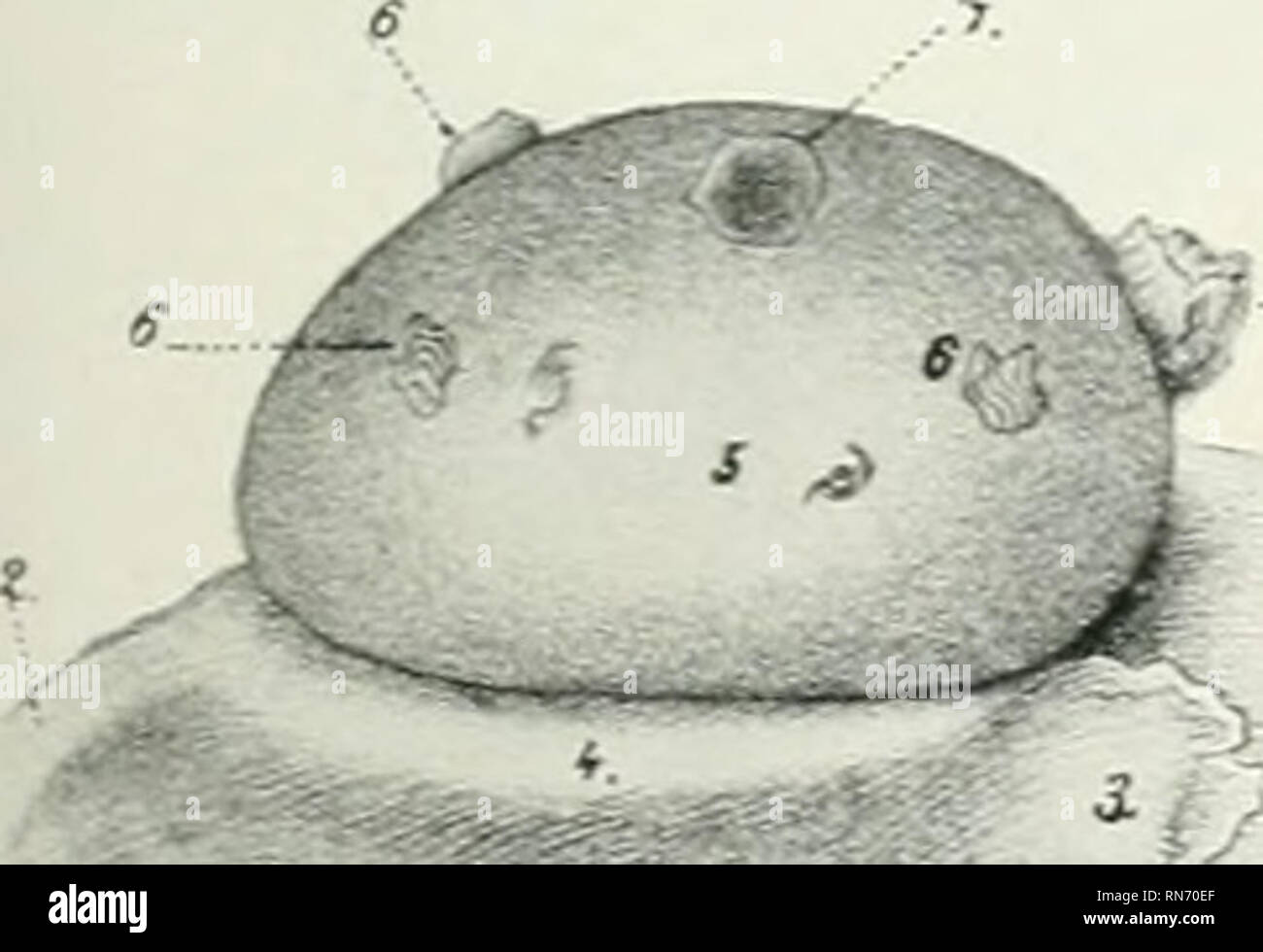. The anatomy of the domestic animals. Veterinary anatomy. GENITAL ORGANS OF THE COW 6a5 consistence than the fat which is found arountl and ^?itllin the giand. It is enclosed by a fibro-elastic capsule which sends inward numerous trabeculse; these form the interstitial tissue, and divide the gland into lobes antl lobules. In the latter are the secretory tubules and alveoli, which unite to form the larger ducts. Each lobe has a duct, which opens at the base of the teat into a space called the lactiferous sinus (Sinus lactiferus), and from this two (or three) lactiferous ducts (Ductus lactifer

Image details
Contributor:
Library Book Collection / Alamy Stock PhotoImage ID:
RN70EFFile size:
7.1 MB (163 KB Compressed download)Releases:
Model - no | Property - noDo I need a release?Dimensions:
1910 x 1308 px | 32.3 x 22.1 cm | 12.7 x 8.7 inches | 150dpiMore information:
This image is a public domain image, which means either that copyright has expired in the image or the copyright holder has waived their copyright. Alamy charges you a fee for access to the high resolution copy of the image.
This image could have imperfections as it’s either historical or reportage.
. The anatomy of the domestic animals. Veterinary anatomy. GENITAL ORGANS OF THE COW 6a5 consistence than the fat which is found arountl and ^?itllin the giand. It is enclosed by a fibro-elastic capsule which sends inward numerous trabeculse; these form the interstitial tissue, and divide the gland into lobes antl lobules. In the latter are the secretory tubules and alveoli, which unite to form the larger ducts. Each lobe has a duct, which opens at the base of the teat into a space called the lactiferous sinus (Sinus lactiferus), and from this two (or three) lactiferous ducts (Ductus lactiferi) pa-ss through the extremity of the teat. These ducts are Hned with a non- glandular mucous membrane, which is covered with stratified squamous epithelium. They are surrounded by unstriped muscular tissue, the bulk of the fibers being ar- ranged in a circular manner to form a sphincter. The size and form of the mammarj' glands are subject to much variation. In the young subject, before pregnancy, they are small and contain Uttle gland tissue. During the latter part of gestation, and especially during lactation, they increase greatly in size, and the gland tissue is highly developed, .fter lactation the secretory- structiu'es undergo market! involution, and the gland is much reduced in size. The relative amovmts of gland substance and interstitial tissue varj- greatly; in some ca.ses a gland of considerable size contains Uttle parenchjTna and is con- sequently functionally deficient. Vessels and Nerves.—The arteries are derived from the external puclic artery, which enters the gland at the posterior part of its base. The veins form a plexus on either side of the l)ase of the gland, which is drained by the external pudic vein chiefly. The lymph vessels are numerous and pass to the superficial inguinal and lumbar lymph glands. The nerves are derived from the inguinal nerves and the posterior mesenteric plexus of the sjTnpathetic system. GENITAL ORGANS OF THE COW The ovaries o